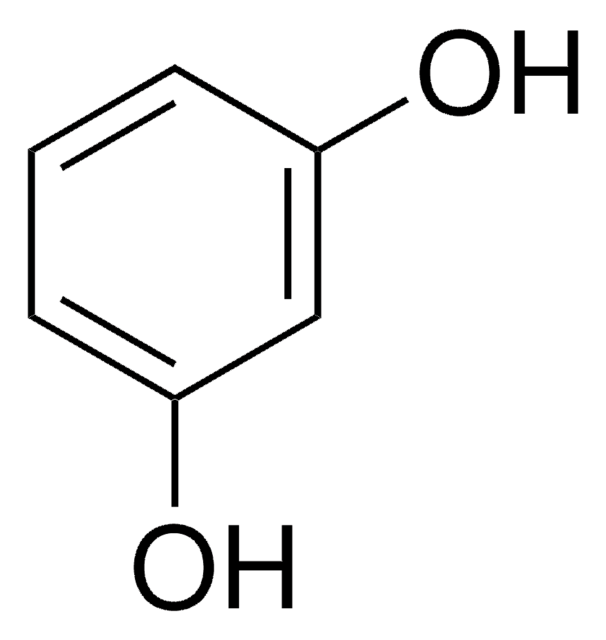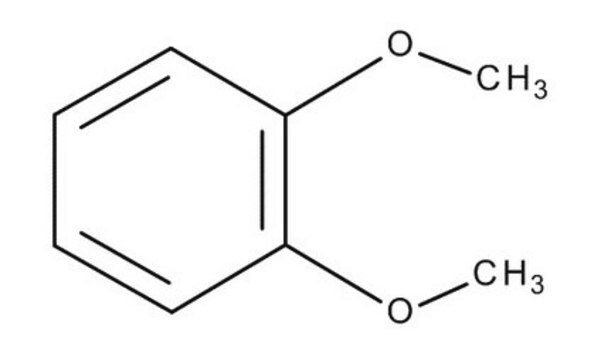135011
1,2-Dihydroxybenzene
ReagentPlus®, ≥99%
Synonym(s):
Pyrocatechol, 1,2-Benzenediol, 1,2-Dihydroxybenzene, 2-Hydroxyphenol, Catechol
About This Item
Recommended Products
vapor density
3.8 (vs air)
Quality Level
vapor pressure
1 mmHg ( 75 °C)
10 mmHg ( 118.3 °C)
product line
ReagentPlus®
Assay
≥99%
form
solid
bp
245 °C (lit.)
mp
100-103 °C (lit.)
SMILES string
Oc1ccccc1O
InChI
1S/C6H6O2/c7-5-3-1-2-4-6(5)8/h1-4,7-8H
InChI key
YCIMNLLNPGFGHC-UHFFFAOYSA-N
Looking for similar products? Visit Product Comparison Guide
General description
Application
1,2-Dihydroxybenzene in combination with amberlite XAD-2, can be used as a chelating resin in the determination of metal ions, using atomic absorption spectrophotometry (AAS).
Legal Information
Signal Word
Danger
Hazard Statements
Precautionary Statements
Hazard Classifications
Acute Tox. 3 Dermal - Acute Tox. 3 Oral - Carc. 1B - Eye Dam. 1 - Muta. 2 - Skin Irrit. 2 - Skin Sens. 1
Storage Class Code
6.1C - Combustible acute toxic Cat.3 / toxic compounds or compounds which causing chronic effects
WGK
WGK 3
Flash Point(F)
260.6 °F - closed cup
Flash Point(C)
127 °C - closed cup
Personal Protective Equipment
Regulatory Listings
Regulatory Listings are mainly provided for chemical products. Only limited information can be provided here for non-chemical products. No entry means none of the components are listed. It is the user’s obligation to ensure the safe and legal use of the product.
PDSCL
Deleterious substance
PRTR
Class I Designated Chemical Substances
ISHL Indicated Name
Substances Subject to be Indicated Names
ISHL Notified Names
Substances Subject to be Notified Names
JAN Code
135011-3KG:4548173337647
135011-500G:4548173337654
135011-100G:4548173337586
135011-VAR:
135011-5G:4548173337661
135011-BULK:
135011-5KG:4548173337678
Choose from one of the most recent versions:
Already Own This Product?
Find documentation for the products that you have recently purchased in the Document Library.
Customers Also Viewed
Protocols
Separation of Resorcinol 50 mg/mL; Pyrocatechol; 2-Methylresorcinol; 4-Methylcatechol; 2,5-Dimethylresorcinol 50 mg/mL; 3-Methylcatechol 50 mg/mL; 4-Nitrocatechol 50 mg/mL
Our team of scientists has experience in all areas of research including Life Science, Material Science, Chemical Synthesis, Chromatography, Analytical and many others.
Contact Technical Service















